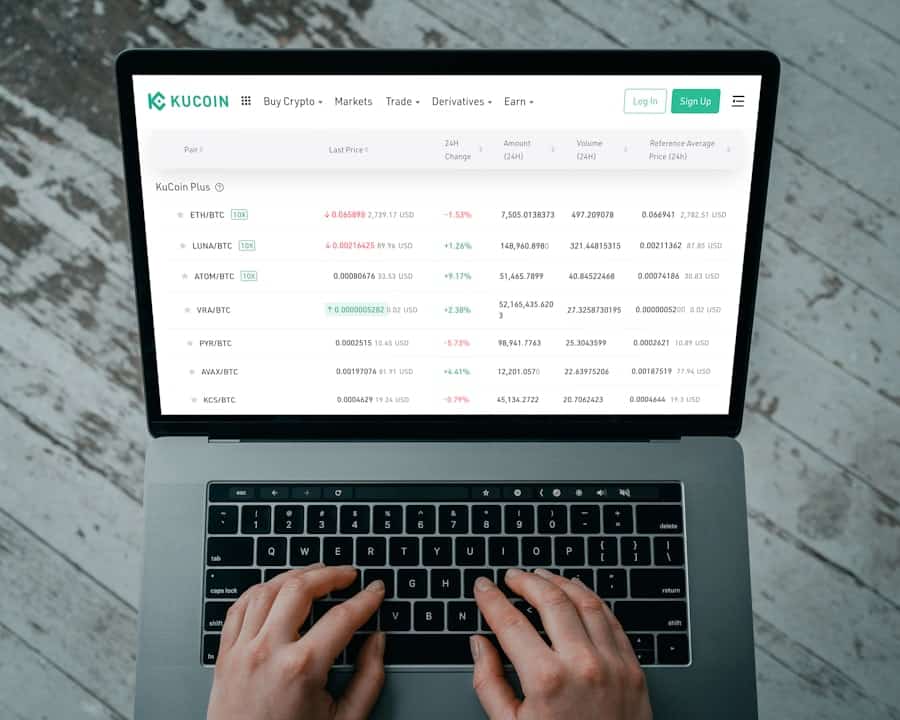Zero Trust Network Access (ZTNA) is a security framework that abandons the traditional notion of trust based on network location within an organization. This model replaces the conventional approach, which assumed internal network elements were trustworthy and external ones were not. As cyber threats have increased and remote work has become more prevalent, this older model has proven inadequate.
ZTNA operates on the principle of “never trust, always verify,” requiring authentication and authorization for all users, regardless of their location relative to the network. ZTNA prioritizes the security of individual devices and user identities over network perimeter protection. It employs various technologies, including identity and access management (IAM), multi-factor authentication (MFA), encryption, and micro-segmentation to ensure that only authorized users and devices can access specific resources.
This approach significantly reduces the risk of unauthorized access, data breaches, and lateral movement of threats within networks. ZTNA is particularly relevant in today’s work environment, where employees access corporate resources from diverse locations and devices.
Key Takeaways
- Zero Trust Network Access (ZTNA) is a security model that eliminates the idea of trust based on location and adopts a “never trust, always verify” approach.
- Implementing Versa ZTNA can enhance security by providing secure access to applications and resources based on identity, device, and security posture.
- Versa ZTNA works to secure network access by authenticating and authorizing users and devices before granting access to applications and resources.
- Key features of Versa ZTNA include identity-based access, micro-segmentation, application-level access control, and end-to-end encryption for enhanced security.
- Best practices for implementing Versa ZTNA include conducting a thorough assessment of network access requirements, defining access policies, and regularly monitoring and updating security measures.
- Successful case studies demonstrate the effectiveness of Versa ZTNA in enhancing security for organizations across various industries.
- Future trends in network security point towards the increasing importance of Zero Trust models like Versa ZTNA in securing network access and mitigating cyber threats.
Benefits of Implementing Versa ZTNA for Security Enhancement
Granular Access Control
Versa ZTNA provides granular access control, allowing organizations to define and enforce access policies based on user identity, device posture, location, and other contextual factors. This ensures that only authorized users with compliant devices can access specific resources, reducing the risk of unauthorized access and data breaches.
Enhanced User Experience
Versa ZTNA improves user experience by providing secure access to applications and resources from any location and device. This is particularly important in today’s remote work environment, where employees need to access corporate resources from various locations and devices. Versa ZTNA ensures that users can securely connect to the network without compromising security or performance.
Reduced Attack Surface and Improved Visibility
Furthermore, Versa ZTNA helps organizations reduce their attack surface by implementing a least-privileged access model. This means that users only have access to the resources they need to perform their job functions, reducing the risk of lateral movement of threats within the network. Additionally, Versa ZTNA provides visibility and control over all network traffic, allowing organizations to detect and respond to potential security threats in real-time.
How Versa ZTNA Works to Secure Network Access

Versa ZTNA works by authenticating and authorizing users and devices before granting them access to specific resources. When a user attempts to access a resource, Versa ZTNA verifies their identity using multi-factor authentication (MFA) and checks their device posture to ensure it complies with security policies. Once the user and device are authenticated and authorized, Versa ZTNA establishes a secure connection between the user’s device and the resource they are trying to access.
Versa ZTNA uses a variety of technologies such as software-defined perimeter (SDP), secure sockets layer (SSL), and transport layer security (TLS) to create a secure tunnel between the user’s device and the resource. This ensures that all data transmitted between the user and the resource is encrypted and cannot be intercepted by unauthorized parties. Additionally, Versa ZTNA provides micro-segmentation capabilities, allowing organizations to isolate and protect critical resources from unauthorized access.
Furthermore, Versa ZTNA continuously monitors user and device behavior to detect any anomalies or potential security threats. If any suspicious activity is detected, Versa ZTNA can automatically revoke access or apply additional security measures to mitigate the risk. This proactive approach to security helps organizations stay ahead of potential threats and protect their network from unauthorized access and data breaches.
Key Features of Versa ZTNA for Enhanced Security
| Key Features | Description |
|---|---|
| Zero Trust Network Access (ZTNA) | Provides secure access to applications and resources based on identity and context. |
| Multi-factor Authentication (MFA) | Enhances security by requiring multiple forms of verification for user access. |
| Micro-segmentation | Enables fine-grained access control within the network to limit lateral movement of threats. |
| Continuous Monitoring | Monitors user behavior and access patterns to detect and respond to potential threats. |
| Integration with Identity Providers | Seamlessly integrates with existing identity management systems for user authentication. |
Versa ZTNA offers a range of key features that enhance network security and provide organizations with granular control over access policies. One of the key features of Versa ZTNA is its support for multi-factor authentication (MFA), which adds an extra layer of security by requiring users to provide multiple forms of verification before accessing resources. This helps prevent unauthorized access even if a user’s credentials are compromised.
Another important feature of Versa ZTNA is its support for dynamic access policies based on user identity, device posture, location, and other contextual factors. This allows organizations to define and enforce access policies that adapt to changing conditions, ensuring that only authorized users with compliant devices can access specific resources. Additionally, Versa ZTNA provides visibility and control over all network traffic, allowing organizations to monitor user and device behavior in real-time.
Furthermore, Versa ZTNA offers micro-segmentation capabilities, allowing organizations to isolate critical resources from unauthorized access. This helps reduce the attack surface and prevent lateral movement of threats within the network. Additionally, Versa ZTNA provides secure connectivity from any location and device, ensuring that users can securely access corporate resources without compromising security or performance.
Best Practices for Implementing Versa ZTNA
When implementing Versa ZTNA, organizations should follow a set of best practices to ensure a successful deployment and maximize the security benefits. Firstly, organizations should conduct a thorough assessment of their existing network infrastructure and security policies to identify any potential gaps or vulnerabilities. This will help ensure that Versa ZTNA is implemented in a way that aligns with the organization’s specific security requirements.
Secondly, organizations should define clear access policies based on user identity, device posture, location, and other contextual factors. These policies should be regularly reviewed and updated to adapt to changing conditions and ensure that only authorized users with compliant devices can access specific resources. Additionally, organizations should implement multi-factor authentication (MFA) to add an extra layer of security and prevent unauthorized access.
Furthermore, organizations should provide comprehensive training for employees on how to use Versa ZTNA effectively and securely. This will help ensure that employees understand the importance of following security protocols and best practices when accessing corporate resources. Additionally, organizations should regularly monitor user and device behavior to detect any anomalies or potential security threats in real-time.
Case Studies: Successful Implementation of Versa ZTNA for Security Enhancement

Several organizations have successfully implemented Versa ZTNA to enhance their network security and protect their critical resources from unauthorized access. One such organization is a global financial services firm that was facing challenges with securing remote access for its employees. By implementing Versa ZTNA, the organization was able to provide secure connectivity from any location and device while enforcing granular access policies based on user identity and device posture.
This helped reduce the risk of unauthorized access and data breaches while improving user experience. Another organization that successfully implemented Versa ZTNA is a healthcare provider that needed to secure access to sensitive patient data from various locations and devices. By implementing Versa ZTNA, the organization was able to isolate critical resources from unauthorized access using micro-segmentation capabilities while providing secure connectivity for its employees.
This helped ensure compliance with industry regulations and protect patient data from potential security threats.
Future Trends in Network Security and the Role of Versa ZTNA
Looking ahead, the future of network security will continue to be shaped by emerging technologies and evolving cyber threats. One of the key trends in network security is the increasing adoption of zero trust security models such as ZTNA, as organizations seek to eliminate the concept of trust based on network location and improve their overall security posture. Versa ZTNA will play a crucial role in this trend by providing organizations with granular control over access policies and secure connectivity from any location and device.
Additionally, the rise of remote work and the proliferation of IoT devices will continue to present new challenges for network security. Organizations will need to implement robust security measures to protect their network from potential threats arising from remote work environments and insecure IoT devices. Versa ZTNA will help address these challenges by providing secure connectivity for remote employees and enforcing access policies based on device posture and other contextual factors.
In conclusion, Versa ZTNA offers a range of benefits for organizations looking to enhance their network security, including granular access control, improved user experience, reduced attack surface, and proactive threat detection. By following best practices for implementation and learning from successful case studies, organizations can effectively deploy Versa ZTNA to protect their critical resources from unauthorized access and data breaches. Looking ahead, Versa ZTNA will continue to play a crucial role in shaping the future of network security by providing organizations with the tools they need to adapt to emerging technologies and evolving cyber threats.
If you’re interested in learning more about user-generated content in the metaverse, be sure to check out this insightful article on community and culture in the metaverse. It delves into the ways in which users are shaping the virtual world and creating unique experiences for themselves and others. This article provides valuable insights that complement the innovative approach of Versa ZTNA in the metaverse.
FAQs
What is Versa ZTNA?
Versa ZTNA stands for Zero Trust Network Access, which is a security framework that requires all users, devices, and applications to be verified and authenticated before being granted access to a network.
How does Versa ZTNA work?
Versa ZTNA uses a variety of security measures, including multi-factor authentication, encryption, and micro-segmentation, to ensure that only authorized users and devices can access the network. It also continuously monitors and enforces access policies to prevent unauthorized access.
What are the benefits of using Versa ZTNA?
Some of the benefits of using Versa ZTNA include improved security, reduced risk of data breaches, better visibility and control over network access, and the ability to enforce access policies based on user and device identity.
Is Versa ZTNA suitable for all types of networks?
Versa ZTNA is designed to be flexible and scalable, making it suitable for a wide range of network environments, including on-premises, cloud-based, and hybrid networks. It can also be used to secure access for remote and mobile users.
How does Versa ZTNA differ from traditional VPNs?
Versa ZTNA differs from traditional VPNs in that it provides a more granular and secure approach to network access. While VPNs typically provide broad access to a network once a user is authenticated, Versa ZTNA only allows access to specific resources based on user and device identity.











Leave a Reply